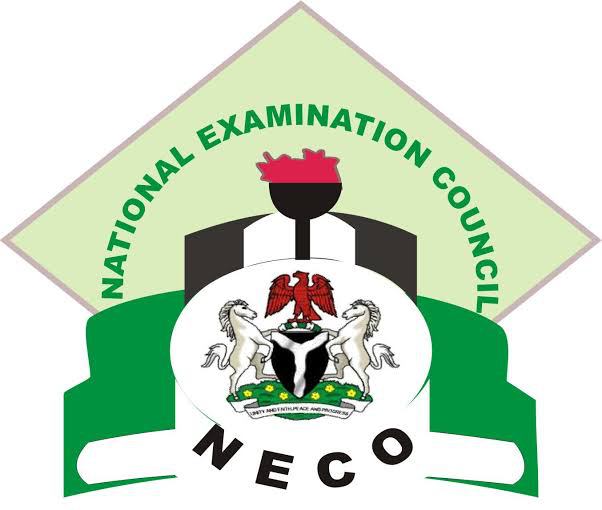WAEC/WASSCE 2019 ALL SPECIMENS
PHYSICS SPECIMEN:
Question 1
Pendulum Bob;
Retort stand and clamp;
Thread;
Stopwatch/clock;
Metre rule.
Question 2
Ray box with illuminated object(cross wire);
Convex lens(f = 15cm)
Screen;
Metre rule;
Lens holder.
Question 3
Potentiometer/metre bridge;
Dry cells(1 pair = 2×1.5v);
Ammeter(0 – 3A);
Resistor P = 1ohms(value concealed);
Key;
Jockey/crocodile clip;
Seven connecting wires.
====================================
CHEMISTRY SPECIMEN:
+ In addition to the fittings and reagents normally
contained in a chemistry laboratory, the following
apparatus and materials will be required by each
candidate:
Typed by Expoloaded.com
(a) One burette of 50cm³ capacity;
(b) One pipette, either 20cm³ or 25cm³. All
candidates at one centre must use pipettes of the
same volume. These should be clean and free
from grease.
(c) The usual apparatus for Titration;
(d) The usual apparatus and reagents for
qualitative work including the following with all
reagents appropriately labelled.
(i) Red and blue litmus paper,
(ii) aqueous ammonia,
(iii) dilute hydrochloric acid,
(iv) dilute sodium hydroxide solution,
(v) barium chloride solution,
(vi) dilute trioxonitrate(v) acid,
(vii) silver trioxonitrate(v)solution,
(viii) Lime water
(e) glass rod;
(f) filtration apparatus,
(g) spatula,
(h) two boiling tubes,
(i) four test tubes,
(j) wash bottle containing distilled/deionized
water,
(k) mathematical table/calculator.
+ Each candidate should be supplied with the
following, where ‘n’ is the candidate’s serial
number.
Typed by Expoloaded.com
(a) 150cm³ of potassium tetraoxomanganate
(VII)solution in a corked flask or bottled labelled
‘A’n. These should all be the same containing 7.7g
of KMnO4 per dm³ of solution.
(b) 150cm³ of iron(II)chloride solution in a corked
flask or bottle labelled ‘Nn’. These should all be
the same containing 19.1g of FeCl2 per dm³ of
solution.
NB- FeCl2 solution should be freshly prepared.
– Each candidate should be provided with 150cm³
2M H2SO4.
(c) One spatulaful of copper(II)chloride in a
specimen bottle labelled ‘Cn’ and one spatulaful of
ammonia carbonate in a specimen bottle labelled
‘Dn’.
====================================
BIOLOGY SPECIMEN:
Group I ( For all candidates)
Typed by Expoloaded.com
Specimen A – Fresh/wet preserved mosquito
larva in a petri dish containing water.
Specimen B – Fresh/wet preserved maggot in a
petri dish containing water.
Specimen C – Gill of fish (freshly procured) in a
petri dish containing water.
Specimen D – Lung of a small mammal(freshly
preserved).
Specimen E – Dicotyledonous leaf (freshly
plucked).
Specimen F – Membranous wing of a cockroach.
Group III (For candidates in Nigeria and the Gambia only)
Specimen K – Flower of pride of Barbados or
caesalpinia
Specimen L – Mature Elephant grass or Guinea
grass.
Specimen M – Flower of Hibiscus plant.
NB:
(i) All specimens can be provided as group
specimens for five(5) to ten(10) candidates.
(ii) All specimens in each group must carry
individual labels (Eg A, B, C, D, E and F in Group I)
+ It is essential that each candidate should be
provided with the following materials;
(i) glass jar cover or petri dish,
(ii) a beaker containing water,
(iii) a pair of forceps,
(iv) a hand of lens/magnifying lens,
(v) scalpel OR razor blade/knife
AGRIC SPECIMEN:
LIST OF SPECIMEN:
A: Axe
B: Spade
C: Sickle
D: Hand trowel
E: Shears
F: Hand fork
For specimens G , H and I , you are requested to
get some quantity of Sandy soil. Divide the
quantity of Sandy soil into three portions.
Wash the first portion which is to be labelled G
with a neutral solution(water) until the soup is
neither acidic nor alkaline then air-dry the soil.
Typed by Expoloaded.com
To the second portion which is to be labelled H ,
add some quantity of Hydrochloric acid(HCL) and
air-dry.
To the third portion which is to be labelled I , add
some quantity of sodium Hydroxide(NaOH)
solution and air-dry.
Then supply to each candidate, samples of
specimens G , H and I each in a beaker, some
quantity of water, blue litmus paper, red litmus
paper and a
stirrer.
J: Maize grain damaged by weevils
K: Yam tuber damaged by yam beetles
L: Cassava leaves showing mosaic disease
symptoms
M: Tomato fruits showing fruit rot symptoms
N: Liver fluke(preserved/picture/diagram)
O: Tick
P: Trypanosome parasite(diagram/picture)
Q: Rat
R: Bird
S: Grass Hopper
ANIMAL HUSBANDRY SPECIMEN:
Loading……….



Leave a Reply